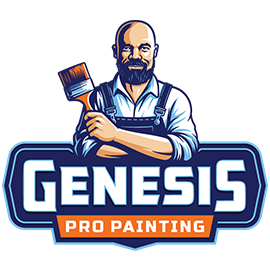When a professional takes charge of your paint job then the end result is a smooth finish, maintained color consistencies and a great looking wall. But, what if you want to take on the task of painting a wall? Or what if you want to assess the paint job of a professional? If you decide to paint your walls yourself or if you choose to hire a contractor it is important to maintain color consistency during your painting job. Professional paint jobs look amazing because they don’t have paint overlapping, bumps, missed spots or color inconsistencies. So here are some tips to get the perfect paint job on your walls!
Apply the same number of coats
Although applying the same number of coats on the surface seems pretty obvious, you need to make sure you don’t get deceived by the light exposure of your walls. Avoid layering walls that might look lighter or paler. Sometimes paint tends to become more opaque once it dries so it is important to wait for the entire painted surface to dry before you add on another coat. Though this is something a professional is acquainted with, it’s something you want to consider to make sure your paint job is well done.
Leave some paint in the can
When you are painting larger surfaces, you might underestimate the amount of paint required to paint a room. Always leave a little bit of paint in the can, so you can use it as reference to get more paint. Plus, you don’t have to worry about wasting the leftover paint because that will be useful for finishing touches. Although this might be a simple trick, it is really helpful in maintaining the color consistency of your freshly painted walls.
Clean and prime the surface
Before you start your paint job, it is important that you start with a clean, primed and smooth surface. Clean the surface to get rid of the dirt and grease to ensure that the paint adheres to the area properly. Then paint the area with a primer to make the surface smooth and get rid of any blotches or bumps that might affect the paint application and make it look uneven. The primer also makes sure that the surface is even and gives you the desired result.
Use a roller
Rollers are the best painting tool to use while painting larger surfaces. Along with making the paint job far easier, rollers have a practical benefit as well. In each stroke, rollers provide a consistent and smooth paint finish as they cover a greater surface area than a paint brush. Make sure that you carefully use the roller in areas with wet paint and avoid reapplying more paint on dried areas as this can cause bumpiness on the painted surface, giving an uneven result. Above all, paint rollers are an efficient option.
Divide the paint job
Professionals usually start by painting the trim of the room, then the ceiling and finally the walls. Not only does this help even out the paint job, but also gets the work done faster as it is more organized and planned approach. But make sure that you do not divide the painting surface as it can cause unsightly lap marks.
These are the tips to help you get the perfect paint job, particularly if you decide to take on the job yourself!

